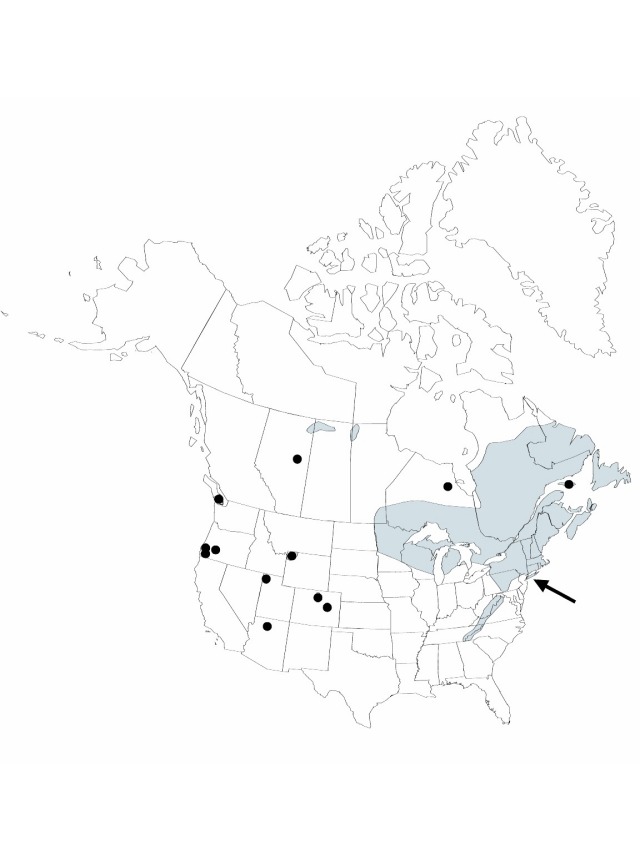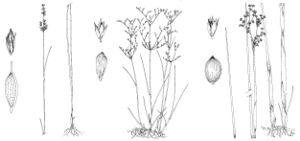Difference between revisions of "Juncus tweedyi"
Rhodora 6: 35. 1904.
imported>Volume Importer |
imported>Volume Importer |
||
| Line 80: | Line 80: | ||
|publication year=1904 | |publication year=1904 | ||
|special status=Illustrated;Endemic | |special status=Illustrated;Endemic | ||
| − | |source xml=https:// | + | |source xml=https://bitbucket.org/aafc-mbb/fna-data-curation/src/2e0870ddd59836b60bcf96646a41e87ea5a5943a/coarse_grained_fna_xml/V22/V22_274.xml |
|genus=Juncus | |genus=Juncus | ||
|subgenus=Juncus subg. Septati | |subgenus=Juncus subg. Septati | ||
Revision as of 20:30, 5 November 2020
Herbs, perennial, cespitose, 1.4–5.5(–7) dm. Culms erect, terete, 1–3 mm diam., smooth. Cataphylls 0–1, straw-colored to pink, apex acute. Leaves: basal 1–3, cauline 1–2; auricles 0.5–3 mm, apex rounded to truncate, scarious; blade terete, 1.5–25 cm × 0.5–2.5 mm. Inflorescences terminal panicles or racemes of 2–35 heads, 1–12 cm, branches erect; primary bract erect; heads 2–8-flowered, ellipsoid to narrowly obconic, 2–9 mm diam. Flowers: tepals green to light brown, lanceolate; outer tepals 2.3–3.1 mm, apex acuminate to rarely obtuse; inner tepals 2.5–3.2 mm, apex acuminate; stamens 3 (or 6), anthers 1/4–1/2 filament length. Capsules exserted, chestnut brown, imperfectly 3-locular, narrowly ellipsoid to prismatic, 3.2–4.8 mm, apex acute proximal to beak, valves separating at dehiscence. Seeds fusiform, 0.7–1.2 mm, tailed; body covered with whitish translucent veil. 2n = 80.
Phenology: Fruiting mid summer–fall.
Habitat: Generally in acidic or peaty moist sites, including emergent shorelines and aroundg hot springs
Elevation: 100–2500 m
Distribution

Alta., B.C., Man., N.B., Nfld. and Labr., N.S., Ont., P.E.I., Que., Sask., Ariz., Colo., Conn., Maine, Md., Mass., Mich., Minn., Mont., N.H., N.Y., N.C., Oreg., Pa., R.I., Tenn., Utah, Vt., Va., W.Va., Wis., Wyo.
Discussion
Populations from about around hot springs in the west have been separated as Juncus tweedyi Rydberg, but no morphologic distinction appears to exist between J. tweedyi and J. brevicaudatus.
Selected References
None.
